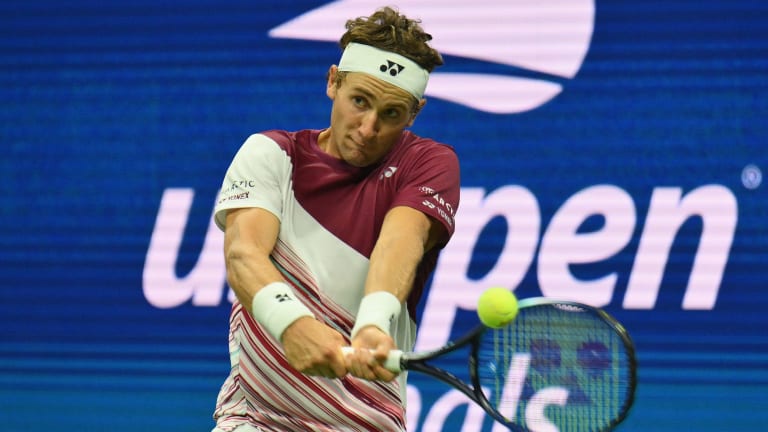US Open
A joyous Carlos Alcaraz fought off exhaustion and a surging Casper Ruud to win his first Grand Slam title, and clinch No. 1
By Sep 12, 2022US Open
Eric Butorac will replace Stacey Allaster as US Open tournament director
By Nov 17, 2025US Open
Beyond The Champions: 2025 US Open Winners and Losers
By Sep 10, 2025US Open
In US Open defeat, Jannik Sinner faces his shortcomings
By Sep 09, 2025US Open
Amanda Anisimova's US Open fortnight wasn't just "incredible"—it was redemptive
By Sep 09, 2025US Open
Overcoming Doubt, Finding Deliverance: Six WTA takeaways from the 2025 US Open
By Sep 08, 2025US Open
Service and a smile: How Carlos Alcaraz conquered Jannik Sinner at the 2025 US Open
By Sep 08, 2025US Open
Carlos Alcaraz captures sixth Slam and second US Open title, dethrones No. 1 Jannik Sinner
By Sep 07, 2025US Open
Alcaraz vs. Sinner US Open final start delayed by 30 minutes
By Sep 07, 2025US Open
Blinding Lights: Amanda Anisimova rues missed opportunities, serve woes after US Open final
By Sep 07, 2025A joyous Carlos Alcaraz fought off exhaustion and a surging Casper Ruud to win his first Grand Slam title, and clinch No. 1
“I would say I overcame myself a little bit,” said the 19-year-old, who rediscovered the joy in tennis in New York.
Published Sep 12, 2022
Advertising
Advertising

Ruud had a two-sets-to-one lead in sight, but it all went downhill from there.
© AFP via Getty Images
Advertising
Advertising

Many believe that Alcaraz's title is the first of many at the majors.
© AFP via Getty Images